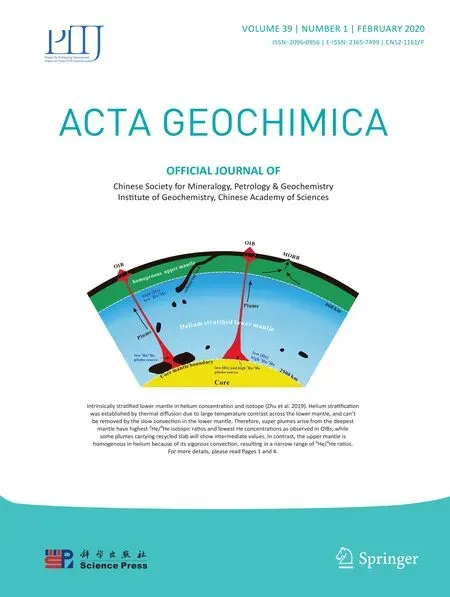The occurrences and geochemical characteristics of thorium in iron ore in the Bayan Obo deposit, Northern China
·,2, · ·
Abstract The Bayan Obo deposit in northern China is an ultra-large Fe–REE–Nb deposit. The occurrences, and geochemical characteristics of thorium in iron ores from the Bayan Obo Main Ore Body were examined using chemical analysis, field emission scanning electron microscopy,energy dispersive spectrometer,and automatic mineral analysis software.Results identified that 91.69%of ThO2 in the combined samples was mainly distributed in rare earth minerals (bastnaesite, huanghoite, monazite;56.43% abundance in the samples), iron minerals (magnetite, hematite, pyrite; 20.97%), niobium minerals(aeschynite; 14.29%), and gangue minerals (aegirine,riebeckite, mica, dolomite, apatite, fluorite; 4.22%). An unidentified portion (4.09%) of ThO2 may occur in other niobium minerals (niobite, ilmenorutile, pyrochlore). Only a few independent minerals of thorium occur in the iron ore samples. Thorium mainly occurs in rare earth minerals in the form of isomorphic substitution. Analyses of the geochemical characteristics of the major elements indicate that thorium mineralization in the Main Ore Body was related to alkali metasomatism, which provided source material and favorable porosity for hydrothermal mineralization.Trace elements such as Sc, Nb, Zr, and Ta have higher correlation coefficients with thorium, which resulted from being related to the relevant minerals formed during thorium mineralization. In addition, correlation analysis of ThO2 and TFe, and REO and TFe in the six types of iron ore samples showed that ThO2 did not always account for the highest distribution rate in rare earth minerals, and the main occurrence minerals of ThO2 were closely related to iron ore types.
Keywords Thorium·Occurrence state·Distribution law·Geochemical characteristics·Iron ore·Bayan Obo deposit
1 Introduction
The Bayan Obo deposit,an importantly associated thorium deposit, is internationally recognized as an ultra-large Fe–REE–Nb deposit (Drew et al. 1990; Chao et al. 1997;Kynicky et al. 2012). Recent studies on this deposit have examined its formation processes and age (Yang et al.2014,2017;Lai et al.2015,2016;Smith et al.2015;Zhang et al. 2001, 2002; Fan et al. 2010, 2015, 2016; Zhu et al.2015; Liu et al. 2004), its metallogenic tectonic environment (Yuan et al. 1992; Zhang et al. 2012), and its geochemical characteristics (Lai et al.2012a,b;Lai and Yang 2013; Yang et al. 2000, 2009). However, studies on thorium geochemistry are generally lacking, especially on distribution law and occurrence of thorium in iron ores of the Bayan Obo deposit.
About 0.221 Mt of thorium is present in the Bayan Obo deposit, accounting for 77% of China’s entire thorium reserves (Xu et al. 2005). Although China is short of uranium resources,it has an abundance of thorium.Therefore,the exploitation and utilization of thorium resources not only compensate for the uranium shortage, but also promote the development of other advanced industries that need thorium. However,although iron and some rare earth resources in the Bayan Obo deposit are exploited and utilized,the utilization rate of thorium resources is zero(Su et al. 2005). Based on the industrial value of thorium(Kazimi 2003), it is necessary to investigate the occurrences and distribution law of thorium in the Bayan Obo deposit in order to fully identify thorium resources. Thorium occurrences in the ores are important for the suitability of using the current technology to separate and recycle thorium (Liu et al. 2016; Luo et al. 2010). Therefore, iron ore from the Bayan Obo Main Ore Body was selected as the research subject in this study. Mineral composition and contents of the iron ore, as well as the distribution law, occurrence state and geochemical characteristics of thorium, were examined using chemical analysis, field emission scanning electron microscopy(FESEM),energy spectrum analysis and automatic mineral analysis software. Findings from our study provide a theoretical foundation for the exploitation of thorium resources and the study of thorium metallogeny in the Bayan Obo deposit.
2 Geological features of the deposit
The Bayan Obo deposit is located 150 km north of Baotou,Inner Mongolia (Xiao and Kusky 2009; Bai et al. 1996).The deposit is distributed in the southern limb of the Kuangou anticline, between dolomite and slate in both limbs of the southern syncline. A narrow ore belt (about 18 km long and 2–3 km wide)was formed in an east–west direction. Large and small iron ore bodies exist across an area of about 48 km2, among which the largest two ore deposits are the Main Ore Body and the East Ore Body located in the central part of the ore-bearing belt (Fig. 1).Sixteen iron ore bodies of different sizes are present in the western part of the ore-bearing belt,known as the West ore body.
The Main Ore Body is mainly composed of various types of iron ores containing niobium and rare earth elements. The ore types are diverse and the mineral composition and structures complex.In the ore body,the fluoritetype Nb–REE–Fe ore is distributed in the lower part, and the aegirine-type Nb–REE–Fe ore and riebeckite-type Nb–REE–Fe ore are distributed in the upper part near the siliceous slate. The massive-type Nb–REE–Fe ore is distributed in the middle section. The surrounding rock in the hanging side of the iron ore body is either mainly black siliceous slate or biotitization slate with interlayers of biotite. Biotitization of the slate becomes weakened with increasing distance from the ore body. Due to sodium metasomatism, an aegirine-type Nb–REE ore belt also developed,and the surrounding rock in the heading side of the iron ore body is dolomite-type Nb–REE ore.
3 Samples and experiments
3.1 Sample collection
The mining level of the Bayan Obo Main Ore Body was selected for this study. Sampling was undertaken in 2–14 exploration lines in the W–E trending, and six mining levels(1528–1458)in the vertical direction.Reference was made to the original geology or production exploration network degree (50–200 m × 50–100 m), and sampling was undertaken using a block-picking method. The diameter of the ore block was controlled at about 50–100 mm(Fig. 2a), and the coordinates of sample points were recorded using a GPS. Ore samples weighing about 5 kg were collected from each sampling point. A total of 101 samples were collected, and the samples all had typical representation. TFe (total iron), REO (rare earth oxides)and ThO2grades of each ore sample were tested after crushing. Thirty-five samples met the requirements for REE–Fe ore (TFe ≥20%, REO ≥1%; Table 1). The iron ore samples included six major types of iron ore in the Main Ore Body of the Bayan Obo deposit: fluorite-type REE–Fe ore(Fig. 2b),aegirine-type REE–Fe ore(Fig. 2c),riebeckite-type REE–Fe ore, dolomite-type REE–Fe ore(Fig. 2d), mica-type REE–Fe ore and massive-type REE–Fe ore.
3.2 Experimental analysis
Although iron ore currently extracted from the Bayan Obo deposit (Table 1)is the main raw material for ore dressing and smelting, a single iron ore type sample is not representative of the whole deposit. Iron ore combined samples were therefore prepared and tested to accurately identify the average distribution rate of thorium in each mineral.The 35 typical REE–Fe ore powder samples from the Main Ore Body were combined, mixed and divided in equal quantities and split into three parts of 50, 50, and 2000 g.These samples were mainly used to study the distribution law and occurrence state of thorium. Multi-element chemical analysis was undertaken on one portion of the 50 g sample. Na2O, K2O, MgO, and CaO were measured using atomic absorption spectrometry(AAS)(SHIMADZU AA-6300CF). BaO, TiO2, Sc2O3, MnO2, Nb2O5, Al2O3,ThO2and REO were measured using inductively coupled plasma atomic emission spectrometry (ICP-AES) (Thermo iCAP-6300). S was measured using a high frequency infrared carbon and sulfur analyzer (LECO CS-400). SiO2and P2O5were measured by spectrophotometry,and F was determined by EDTA complexometric titration. FeO and TFe were measured by potassium dichromate oxidation reduction titration.

Fig. 1 Geological map of the Bayan Obo area, northern China (modified after Fan et al. 2016)
The other 50 g sample fraction was used for particle analysis using mesh sizes of + 200 mesh (>0.074 mm),- 200 to+ 500 mesh(0.030–0.074 mm)and- 500 mesh(<0.030 mm). These mesh sizes were prepared into mosaic samples and their surfaces were spray-coated with platinum. The phase composition and the micro-area composition of the samples were then characterized via FESEM (ZEISS Sigma-500) and energy dispersive spectrometer (EDS; BRUKER XFlash 6 | 60) using a backscattered electron imaging analysis technique, combined with micro-area energy spectrum analysis. Minerals were quickly and accurately classified and quantified using the automatic mineral recognition function and advanced graphic processing technology (automatic mineral analysis software). The experimental conditions were: acceleration voltage was 20 kV, the resolution was 0.8 nm, and the probe current was 40–100 nA.
The 2000 g sample was screened into particle fractions of - 80 to + 120 meshes. Magnetite and hematite were separated using the weak and strong magnetic function of the magnetic tube (RK/CXG-Φ50). Mineral separation of the remaining samples was conducted using magnetic separators (S.G. FRANTZ LB-1) according to different specific magnetization coefficients. Mixing powder for each of the six types of iron ores was prepared to study its geochemical characteristics. Major elements were measured using ICP-AES. Trace and rare earth elements were measured by inductively coupled plasma mass spectrometry (ICP-MS) (NEXion300Q). All analyses were undertaken in the Baotou rare earth research institute.
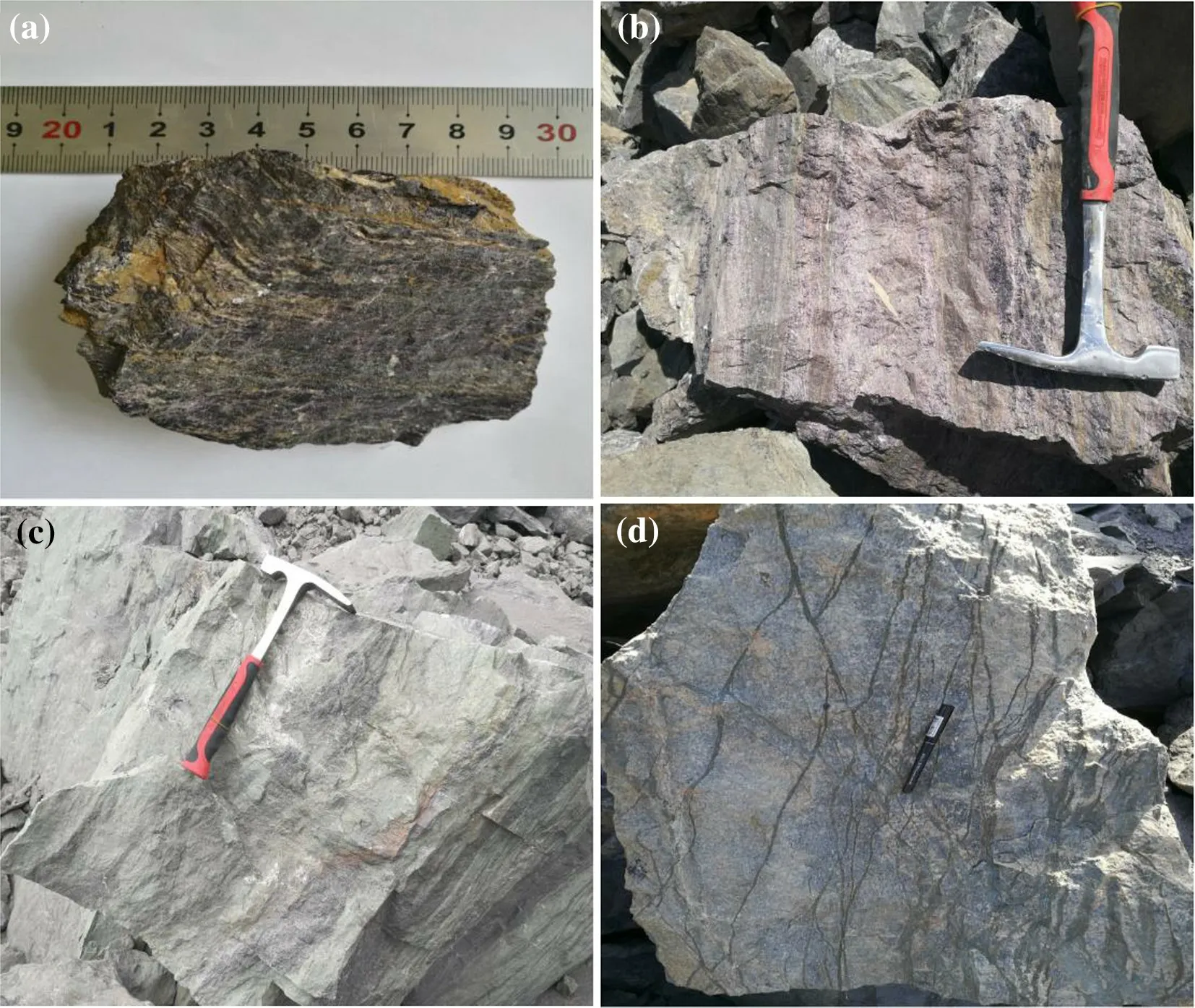
Fig. 2 Main iron ores recovered from the Bayan Obo Main Ore Body. a Iron ore block. b Fluorite-type REE–Fe ore.c Aegirine-type REE–Fe ore. d Dolomite-type REE–Fe ore
4 Results and discussion
4.1 Sample analysis results
4.1.1 Chemical analysis
Chemical analysis results of the iron ore combined samples from the Bayan Obo Main Ore Body (Table 2) contain 32.38%TFe,6.36%REO and 0.038%ThO2.ThO2content in this ore is significantly higher than the Clark value for Th in the earth’s crust (9.6 × 10-4%) (Taylor 1964); the enrichment ratio of ThO2in the Main Ore Body is nearly 35 times greater.
4.1.2 Mineral composition analysis
Mineral content results (Table 3) record iron minerals in the iron ore combined samples to be mainly magnetite,hematite, and pyrite. The rare earth minerals are mainly bastnaesite, huanghoite, and monazite, and the niobium minerals are mainly aeschynite. The gangue minerals mainly consist of carbonates, silicates, phosphates, and fluorides. The sum of iron minerals, rare earth minerals,and niobium minerals account for more than 55% of the total minerals. Although a few particles of independent minerals of thorium(thorite and ferrothorite)are recorded,their content is less than the detection limit. Therefore,thorite,ferrothorite,and other minerals with contents lower than the detection limit are recorded as zero and they are not listed in Table 3.
4.2 Distribution law of thorium
Pure minerals in the samples were collected from the mineral composition analyses(Table 3)using a microscope(ZEISS Stemi 2000-C). A total of 16-types of singleminerals were separated. Each mineral was more than 1 g and purity was greater than 99%. The content of ThO2in each mineral was chemically analyzed (Table 4).
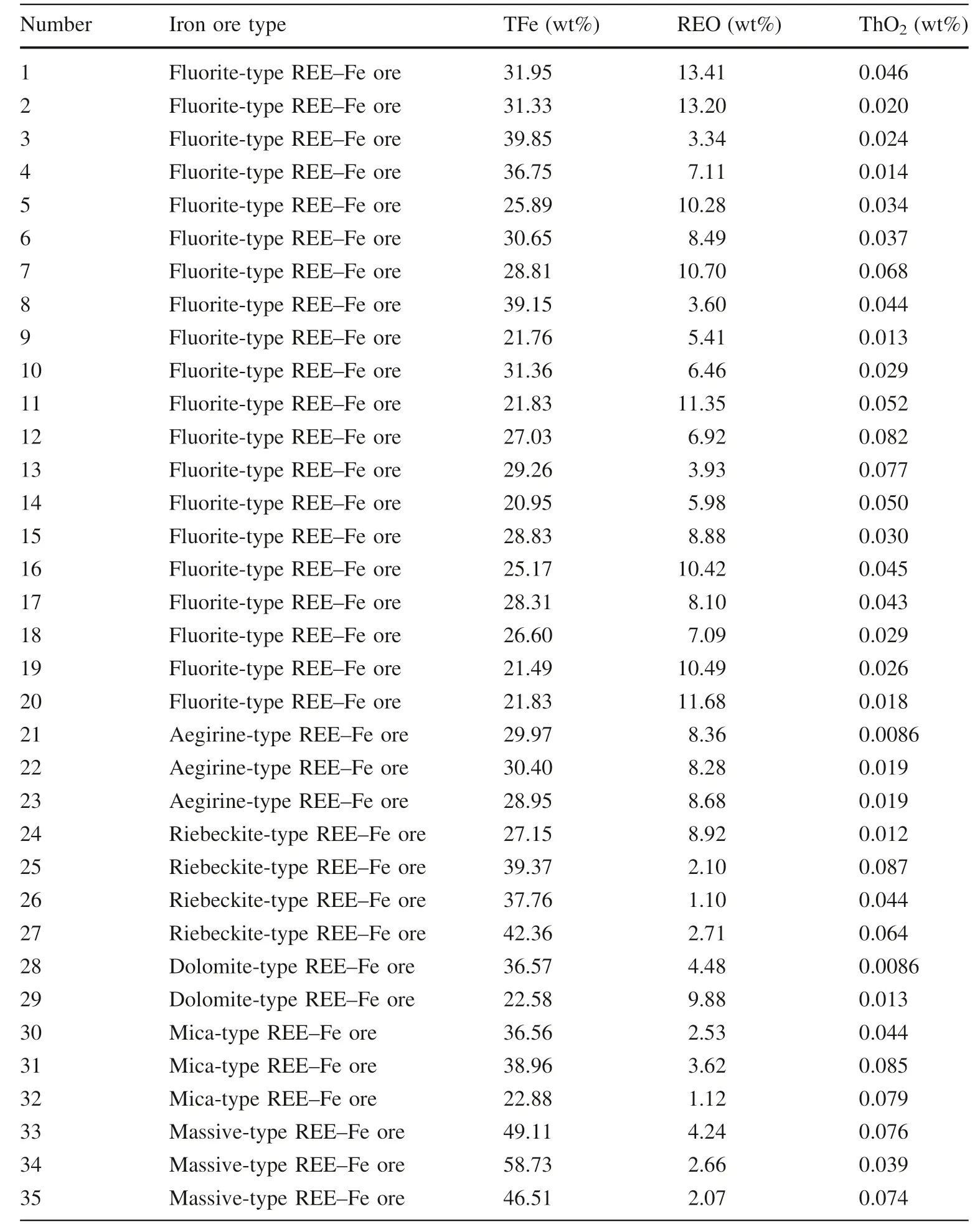
Table 1 Chemical analysis results of iron ore samples from the Bayan Obo Main Ore Body

Table 2 Chemical analysis results of iron ore combined samples from the Bayan Obo Main Ore Body

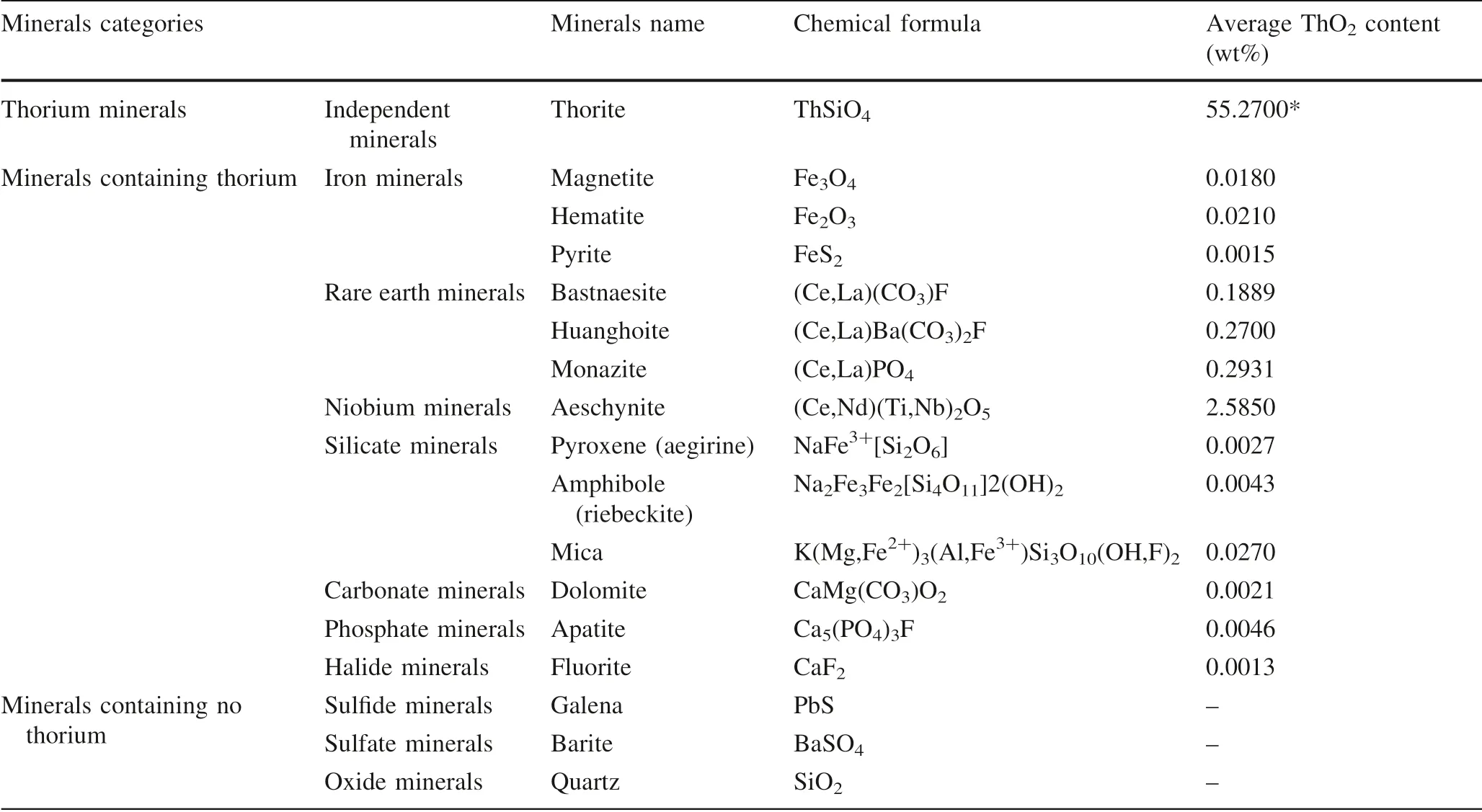
Table 4 Average ThO2 content of partial minerals in iron ore combined samples of the Bayan Obo Main Ore Body
Minerals containing thorium mainly include eight categories (14 types of minerals): independent minerals of thorium (thorite), rare earth minerals, niobium minerals,iron minerals, silicate minerals, carbonate minerals, phosphate minerals,and halide minerals.The average content of ThO2in thorite is 55.2700%.The average content of ThO2in magnetite and hematite were basically the same, but it was notably higher than that in pyrite.The average content of ThO2in bastnaesite,huanghoite,and monazite is 0.1889,0.2700,and 0.2931%,respectively.The average content of ThO2in monazite is significantly higher than that in bastnaesite and huanghoite. The average content of ThO2in aeschynite is 2.5850%, this mineral having the second highest ThO2content after thorite. The average content of ThO2in mica is obviously higher than that in aegirine and riebeckite. The average content of ThO2in dolomite,apatite, and fluorite is low, with a value less than 50 ppm.
The chemical measurement value of ThO2in the iron ore samples is 0.038% (Table 1). Based on the detection value of ThO2in minerals containing thorium and their mineral amount, the equilibrium of ThO2in iron ore samples was calculated (Table 5). The sum of the mineral content of the 16 target minerals is 94.49%, and the total distribution quantity of ThO2is 0.03644%. 95.91% of ThO2is found to be distributed in 13 minerals, except for thorite. Because thorite has a low mineral content, its distribution rate is recorded as‘‘0’’.The total mineral content of magnetite, hematite, and pyrite is 43.36%, and the total ThO2distribution rate was 20.97%. Due to the high mineral content of magnetite, the distribution rate of ThO2in magnetite is about 3 times greater than that in hematite.The total mineral content of bastnaesite, huanghoite and monazite is 10.01%,and the total ThO2distribution rate is 56.43%,indicating that the rare earth minerals are the most important minerals containing thorium. The average content of ThO2in monazite is higher than that in bastnaesite.However, because the mineral content of bastnaesite is significantly higher than that of monazite, the distribution rate of ThO2in bastnaesite is about 2.17 times greater than that in monazite. Although the average content of ThO2in aeschynite is high, total ThO2distribution rate is 14.29%due to the low mineral content of aeschynite. The unidentified 4.09% of ThO2might be more likely to occur in other niobium minerals (niobite {(Fe,Mn)(Nb,Ti,Ta)2-O6}, ilmenorutile {(Ti,Nb,Fe)O2} and pyrochlore{(Ca,Na,Ce)2(Nb,Ti,Ta)2O6(F,OH)}). The total mineral content of aegirine,riebeckite,mica,dolomite,apatite and,fluorite is 35.19%,and the total distribution rate of ThO2is 4.22%. Because ThO2is not present in galena, barite, and quartz,the distribution rate of ThO2is‘‘0’’.In summary,it can be concluded that the distribution rate of ThO2in rare earth minerals is the highest,followed by iron minerals and niobium minerals.
From the aspect of existing mineral processing technology,and according to existing technical conditions,rare earth minerals and niobium minerals containing high thorium could be adopted as the main objects for thoriumrecovery. Due to the low content of ThO2in the minerals,such as the magnetite, hematite, mica, dolomite, apatite,and fluorite,or the low content of the mineral, it is hard to recycle and extract these thorium resources using current technology.
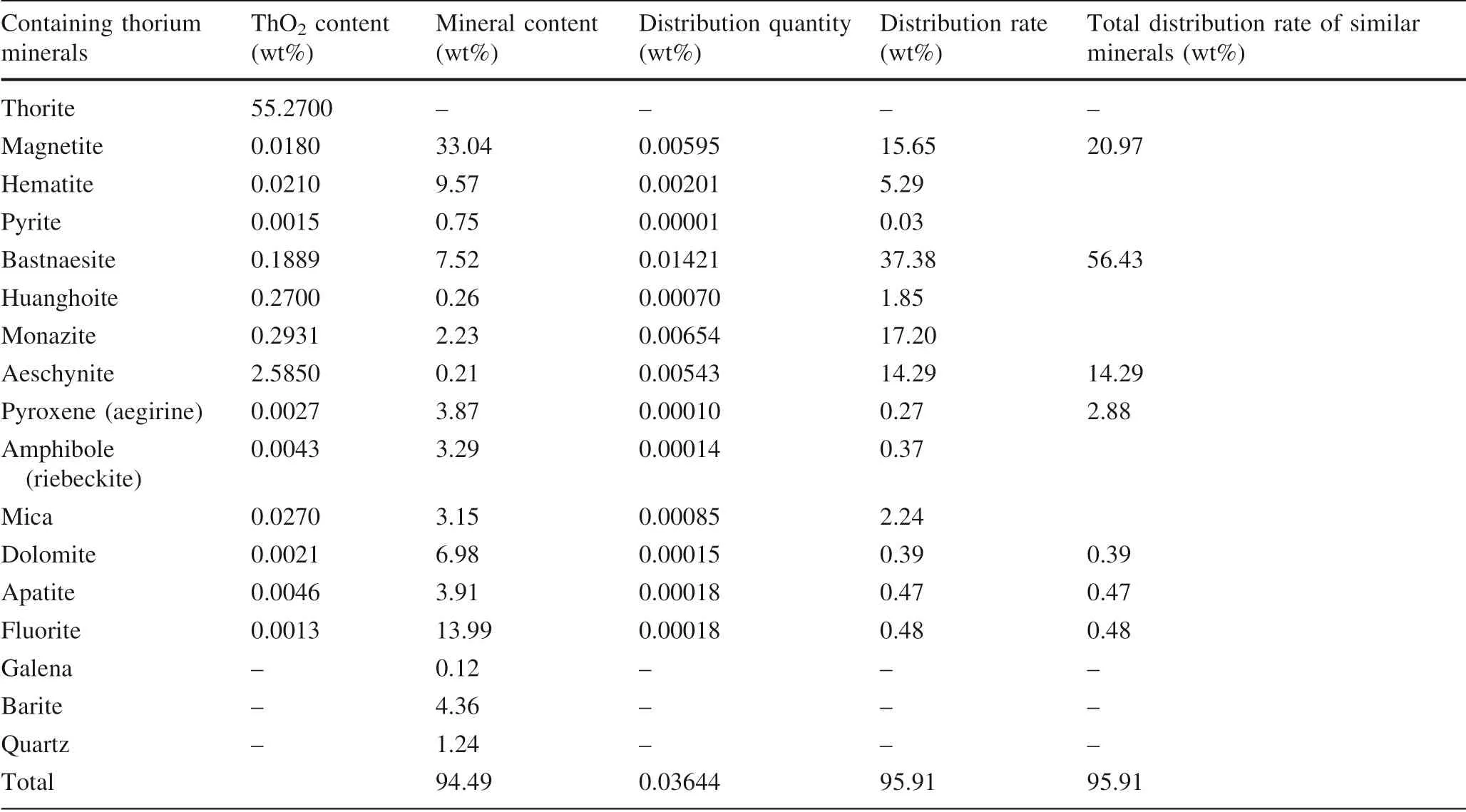
Table 5 ThO2 equilibrium calculation results of iron ore combined samples in the Bayan Obo Main Ore Body
4.3 Occurrence state of thorium
4.3.1 Independent minerals
Mineral measurement and chemical analysis of the combined samples indicate that there are two main types of thorium occurrences in iron ore from the Bayan Obo Main Ore Body. The first type exists in the form of independent minerals, mainly thorite (Fig. 3a, b) and ferrothorite{(Th,Ca,RE,Fe)[(Si,P)(O,OH)4]·nH2O} with less amount of thorianite. Thorite output is mainly in the form of particles with round or other shapes, with a particle size ranging from 0.005 to 0.05 mm. The majority of the particles are disseminated and imbedded in magnetite or other minerals in the form of fine particles.The main paragenetic minerals are aegirine, biotite, and riebeckite, followed by fluorite, bastnaesite, monazite, pyrochlore, etc. Mineral paragenesis analysis results indicate that the main controlling factors for the formation of thorium independent minerals might be concentration of Si, pressure of CO2,and other components in the ore-forming fluid.In the CO2-rich carbonate medium environment, thorium readily formed thorianite. Conditions poor in CO2and rich in Si result in Th being readily combined with [SiO4]4-to form thorite.If the concentration of Fe3+is high,Fe3+would be involved in a crystal lattice of thorite to form ferrothorite(Institute of Geochemistry 1988).
4.3.2 Isomorphism
The second occurrence state of thorium exists in the form of isomorphism.In this study,the occurrence of thorium in bastnaesite and monazite is mainly discussed. Most bastnaesite is yellow or brown-yellow in color, presenting in the form of small particles, and it is imbedded in various types of ore.The particle size of bastnaesite is usually less than 0.1 mm and it is commonly presented as aggregates of fine particles. Monazite is mostly light-yellow or brownyellow in color,the majority of which occurs as aggregates of fine particles. Large particles are presented in a plate or irregular shape, and particle sizes range from 0.005 to 3 mm. Fluorite, aegirine, amphibole, quartz, barite, and magnetite are the common paragenetic minerals of the rare earth minerals. Because the ion radius and the negative charge of thorium are similar to cerium group rare earth elements, some thorium occurrs in rare earth minerals in the form of isomorphism.The electrovalence compensation for Th to replace Ce3+in rare earth minerals is carried out through Ca or Ba as:2∑Ce3+←Th4++ (Ca,Ba)2+(Hou et al. 2018).
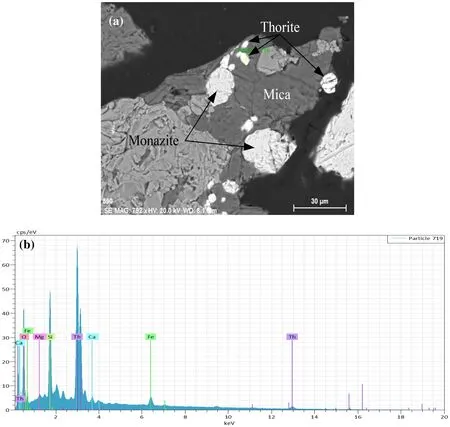
Fig. 3 a Back scattering images of Thorite. b Energy spectrum analysis images of Thorite
In order to better illustrate the occurrence state of thorium, the surface of bastnaesite, monazite, and other minerals were scanned using SEM. Results from this analysis are shown in Fig. 4.
Surface scanning analysis of Ce and P elements(Fig. 4b,c)in the minerals(Fig. 4a)reflect the distribution of the main elements in bastnaesite and monazite. Surface scanning analysis of Th (Fig. 4d) indicates that that the brightness degree of minerals differs, suggesting that minerals generally contained Th. Obvious bright spots in bastnaesite and monazite were recorded, illustrating that thorium is relatively rich in these two minerals. Figure 4d shows that the brightness of monazite is obviously greater than that of bastnaesite,reflecting a higher content of ThO2in monazite than that in bastnaesite.
4.4 Geochemical characteristics of thorium
4.4.1 The relationship between thorium enrichment and major elements
The analytical results of major elements, rare earth elements, and trace elements are listed in Tables 6, 7 and 8,respectively. Analysis results of major elements, thorium,and uranium (Table 6) indicate that the ratio of Th:U in different types of iron ore are relatively diverse, generally between 10 and 320. Thorium-rich and depleted uranium are the geochemical characteristics of the Main Ore Body.
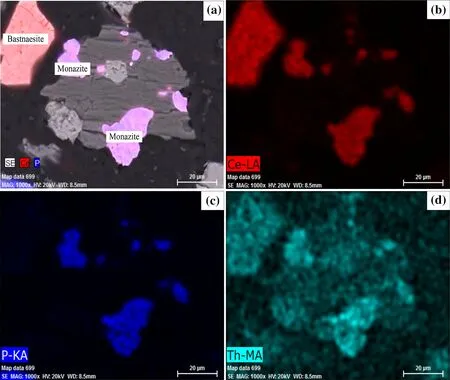
Fig. 4 Surface scanning images of bastnaesite and monazite
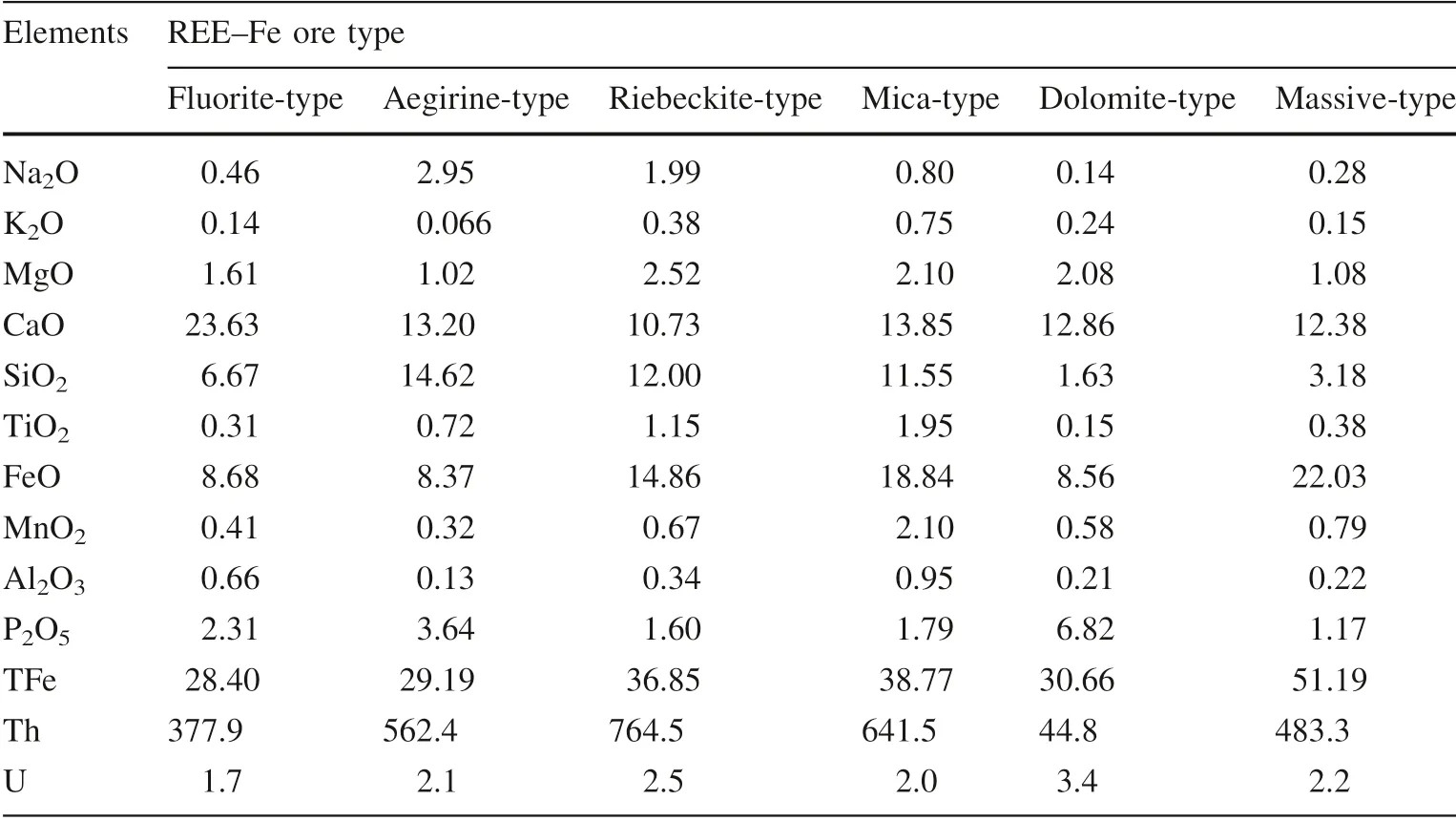
Table 6 Contents of major(wt%) elements, Th and U(ppm) elements of different types of iron ore from the Bayan Obo Main Ore Body
The content of Na2O in most samples is higher than that of K2O, which is related to the hydrothermal metasomatism process in this area.A large volume of research data(Yang et al. 2015; Institute of Geochemistry 1988; Zhang 1995;Du 2002) indicates that the alteration of ore bodies and surrounding rock in the Bayan Obo deposit are mainlycaused by the metasomatism of fluorine, sodium, and potassium. The metasomatism of fluorine mainly reacts with calcareous rock to form fluorite-type Nb–REE–Fe ore.The metasomatism of sodium is mainly represented by aegirinization, riebeckitization, and albitization, predominantly forming aegirine-type Nb–REE–Fe ore and riebeckite-type Nb–REE–Fe ore. The metasomatism of potassium is mainly represented by biotitization and mainly formed mica-type Nb–REE–Fe ore.The contents of thorium in aegirine-type Nb–REE–Fe ore, riebeckite-type Nb–REE–Fe ore, and mica-type Nb–REE–Fe ore, which were formed by strong sodium–potassium metasomatism in the Main Ore Body, are obviously higher than that of dolomite-type Nb–REE–Fe ore with weak fluorine–sodium metasomatism.
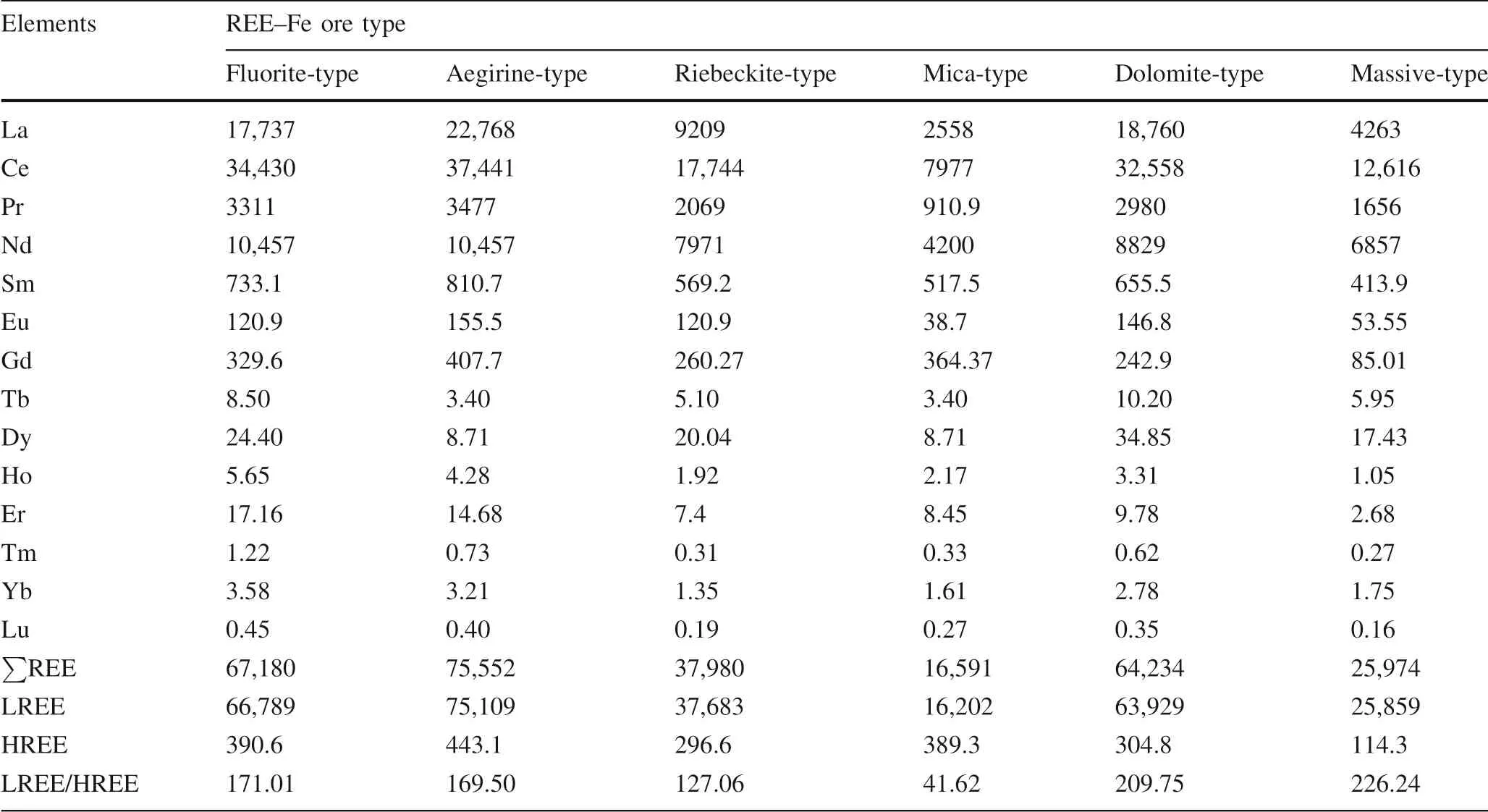
Table 7 Contents of rare earth (ppm) elements of different types of ore from the Bayan Obo Main Ore Body
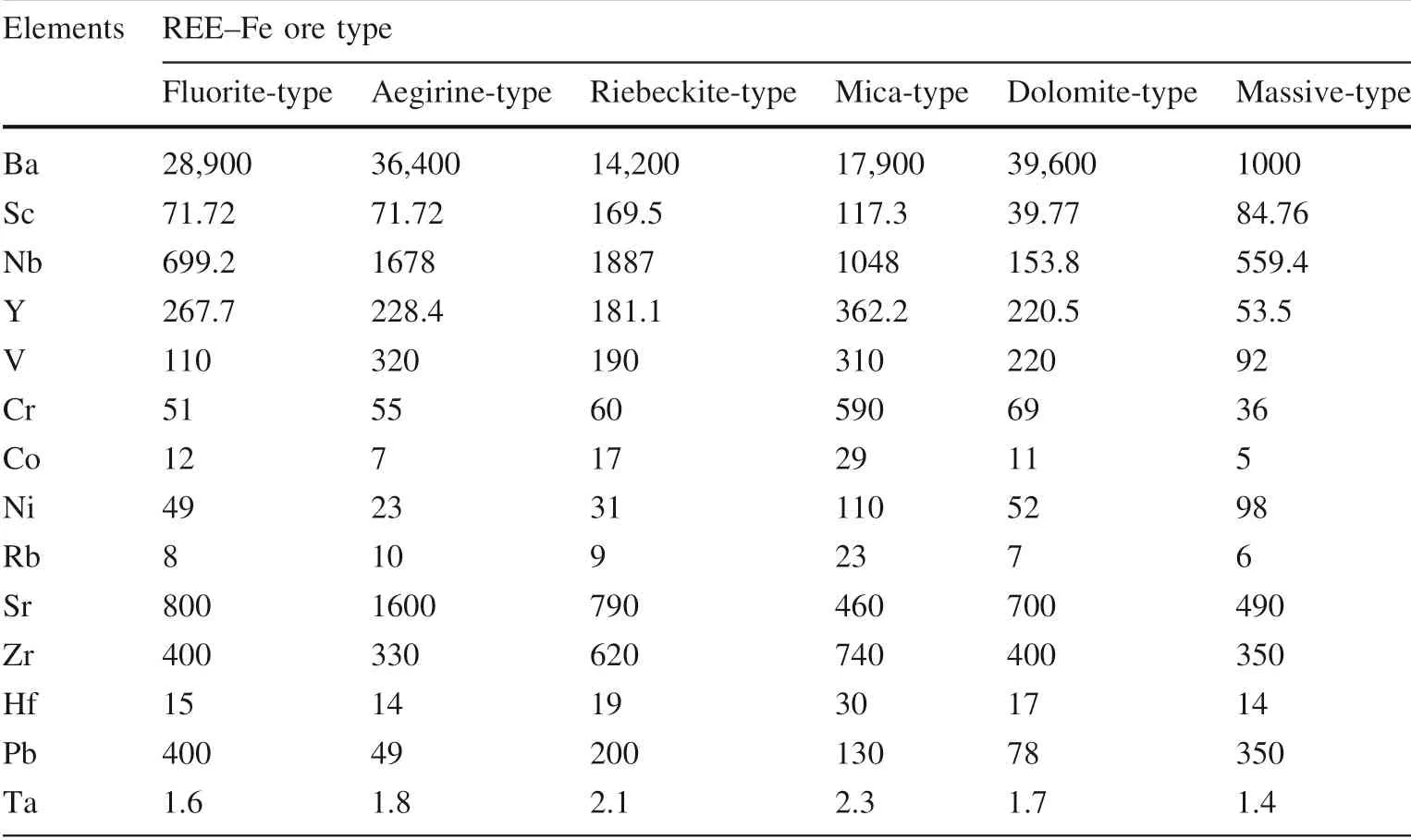
Table 8 Contents of trace(ppm) elements of different types of ore from the Bayan Obo Main Ore Body
Correlation coefficients between Na2O, SiO2, TiO2, and Th are 0.60, 0.78 and 0.72, respectively, showing a significant positive correlation. The correlation coefficient between P2O5and Th is - 0.81, showing a significant negative correlation. Correlation between Th and other elements is not obvious (Table 9).
The correlation coefficients of Na2O and K2O are 0.60 and 0.38,respectively(Table 9),indicating that the role of potassium in the mineralization process of the Main Ore Body is not significant. The metasomatism of sodium was very uneven in the Main Ore Body; the precipitants of sodium are mainly iron and silicon, and their metasomatism is mainly developed along rocks containing silicon and iron. Due to the regular distribution of the original rocks, the intensity of metasomatism varies in different areas (Institute of Geochemistry 1988). Alkaline metasomatism can bring alkaline ions such as Na+, Ca2+, OH-,Cl-and CO32-from the ore-forming hydrothermal solution into the rock. An alkaline hydrothermal solution can extract thorium elements from the surrounding rock, but also can increase the porosity of rock by hydrothermal metasomatism, providing favorable conditions for the precipitation and enrichment of thorium (Meng and Fan 2013). Under the action of volatiles (F, S, P, CO2, etc.),with the precipitation of alkali metals, alkalinity gradually decreases, and the complex in the solution decomposes accompanied by mineralization of thorium (Institute of Geochemistry 1988). Liu and Cao (1987) noted that Th migration was controlled by the proportion of volatiles.Therefore, the mineralization of thorium was the result of various components, various conditions restricting each other and comprehensive action. Alkali metasomatism occupies a relatively important position among them.
There is a significant positive correlation between Th and SiO2(Table 9).It was speculated that at least a part of U and Th in the Main Ore Body may be transported in the form of a silicate complex, and the silicate complex of U and Th are stable only in an alkaline environment. When the pH value decreases, the silicate complex of U and Th are decomposed.After U was precipitated,it was dispersed in the minerals such as fergusonite, pyrochlore, and xenotime, and there was no excess U to form independent minerals of uranium.Due to the solution containing a large amount of Th,some Th entered the rare earth minerals,and there was excess Th to form independent minerals of thorium. As a result, the Th value is larger (Institute of Geochemistry 1988). The significant negative correlation between Th and P2O5is due to a large amount of monazite and apatite produced in the process of mineralization.
4.4.2 The relationship between thorium enrichment and trace elements
The REE characteristic values of the samples (Table 7)indicate that the fluctuation range of ∑REE in different types of iron ore is relatively large. The average value of LREE/HREE is 139.2, which is higher than the average value of LREE/HREE in the crust(Li 1976),indicating that the fractionation of light and heavy rare earth elements is significant. The rare earth elements are mainly composed of the cerium group light rare earth elements, and the content of Ce accounts for more than 50%of the total rare earth elements. The enrichment degree of heavy rare earth elements is low.
The REE distribution patterns of different types of ore in the Main Ore Body have the characteristics of being inclined to the right and having a large slope (Fig. 5a).Rare earth elements have similar activity and have tracer effects in the metallogenic process, which can indicate the metallogenic environment and physical and chemical conditions (Hanson 1980). In the ore-forming hydrothermal solution, thorium and rare earth elements have similar geochemical characteristics, so they were simultaneously activated and transported over long distances in the form of a carbonate complex(Huang et al.2010).When CO2in the ore-forming fluid escapes, the carbonate complex disintegrates at the same time. The solubility of the LREE carbonate anion complex is higher than that of the HREE carbonate anion complex,resulting in the content of LREE in the hydrothermal solution being higher than that of HREE. Under the same conditions, LREE carbonate anion complex is more prone to precipitate than HREE carbonate anion complex (Huang et al. 2010; Cantrell and Bryne 1987). During the precipitation process, due to a large amount of thorium in the hydrothermal solution, some thorium can occur in rare earth minerals in the form of isomorphism.
Cao et al. (1994) and Tu (1998) combined isotopes,geochemistry and other methods to demonstrate that the ore-forming elements of REE and Nb in the Bayan Obo deposit are from the mantle. The ore-forming fluid was relatively rich in sodium, potassium and other alkali metals, siliceous and rare earth elements, niobium and other incompatible elements, and rich in a deep volatile system(H–A–C–O–N–S)(Du 1996,2000).It can be seen from theprimitive mantle-normalized trace element abundance pattern of trace elements that Th element was a strong positive anomaly (Fig. 5b), and it was obviously enriched in Ba,Th,Nb,and REE,and depleted in U,K,Ta,Sr,P,Zr and Hf. This finding indicates that Th, Nb, and REE have the same matter source and the same mineralization process. In summary, we believe that the ore-forming fluid in this area originates from the mantle. Mantle fluids from deep areas have a super ability of dissolving and extracting.During the upward migration of the mantle fluid,it can not only extract the relatively enriched and incompatible Th,REE and other metallogenic elements in the crust, it can also react with basement and surrounding rocks to extract Th,REE etc.The content of metallogenic elements such as Th and REE in the final hydrothermal fluid is much higher than that of the mantle fluid itself and surrounding rock.With the change of physical and chemical conditions,precipitation is unloaded in favorable metallogenic space,thus forming thorium mineralization (body) (Wu et al.2005).

Table 9 Correlation coefficients of Th and major elements of samples
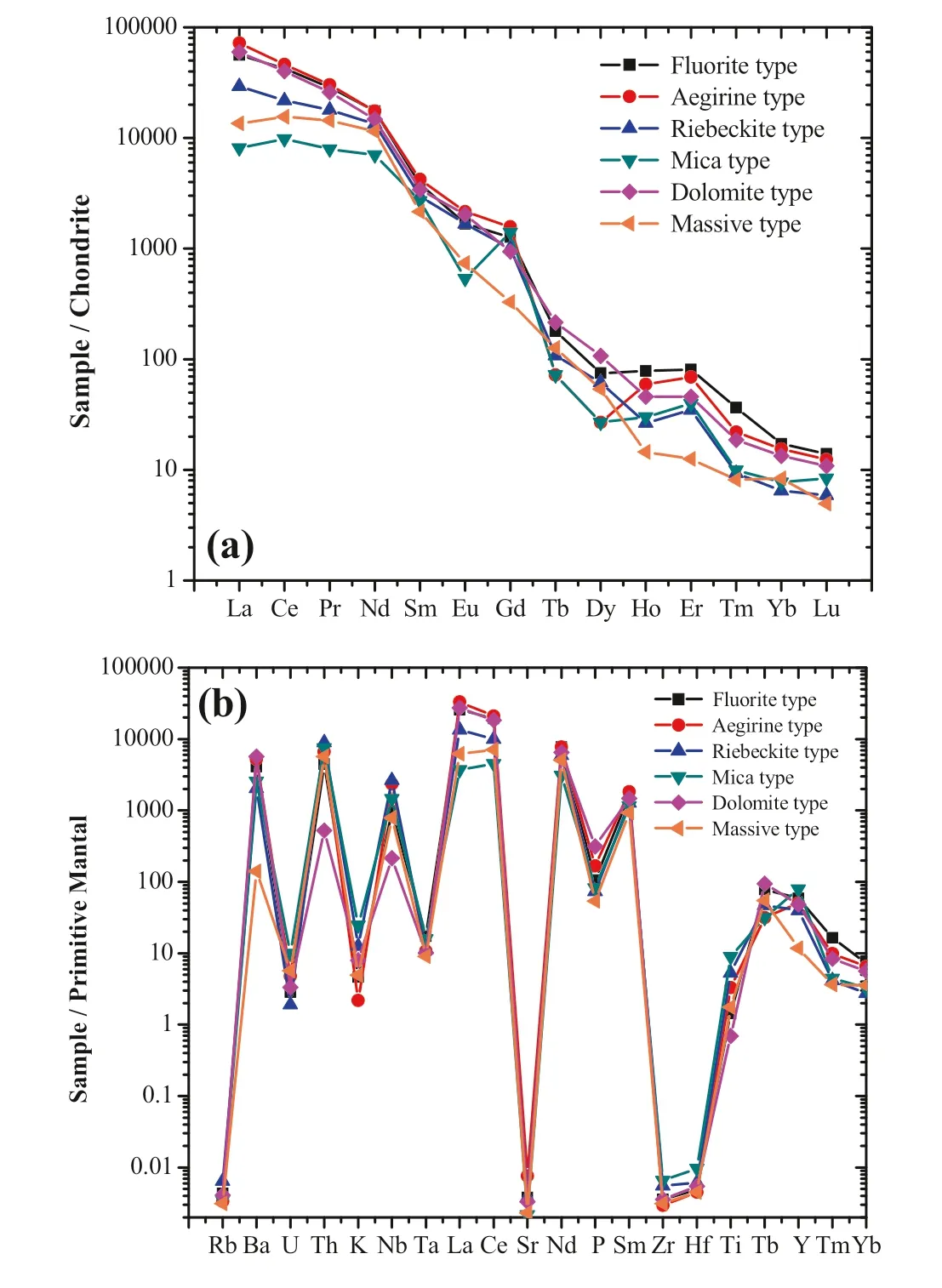
Fig. 5 a Chondrite-normalized REE abundance diagram for samples from Bayan Obo Main Ore Body.Chondrite values are from Masuda et al.(1973).b Primitive mantle-normalized trace element abundance pattern for samples from Bayan Obo Main Ore Body. Primitive mantle values are from Sun and McDonough (1989)
The correlation coefficient between trace elements(Table 10) indicates that Th has a significant positive correlation with Sc, Nb, Zr, and Ta. Among minerals such as zircon, titanite, allanite, monazite, pyrochlore, and ilmenorutile associated with thorium minerals, and in addition to containing higher levels of Sc,Nb,Zr,Ta,etc.,it also contains more Th. Some minerals have similar geochemical properties and some were closely associated with each other,leading to a closer correlation between Th and trace elements in the Main Ore Body. Th was negatively correlated with Ba, U, ∑REE and LREE, while other elements had a reduced correlated with Th.
Correlation analysis of elements identified from chemical analysis of the iron ore samples (see Table 1) indicate that correlations exist between ThO2and REO and ThO2and TFe (Fig. 6a, b).
Although the distribution rate of ThO2in rare earth minerals was the highest, ThO2and REO were negatively correlated from the perspective of different iron ore types(Fig. 6a). This indicates that not all ThO2in the six different types of iron ore had the highest distribution rate in the rare earth minerals. However, ThO2and TFe were positively correlated(Fig. 6b),indirectly indicating that the distribution rate of ThO2in iron minerals might be higher than that of rare earth minerals in certain types of iron ores.According to the main distribution positions, the scattered points in Fig. 6a,b were divided into three regions.Results indicate that the scattered points in the riebeckite-type REE–Fe ore, mica-type REE–Fe ore and massive REE–Fe ore were mainly distributed in area I.The contents of ThO2and TFe in this area are relatively high, and the content of REO is relatively low, indicating that the distribution rate of ThO2in iron minerals would occupy a high proportion.SEM analysis also identified that small amounts of thorite and ferrothorite are mixed in the magnetite of the three types of iron ores, therefore ThO2and TFe has a positive correlation in these types of iron ore. The scattered distribution of fluorite-type REE–Fe ore is relatively concentrated and mainly distributed in area II.The scattered spots of aegirine-type REE–Fe ore and dolomite-type REE–Fe ore are mainly distributed in area III. In areas II and III, a positive correlation between ThO2and REO exists, but ThO2is negatively correlated with TFe,indicating that the distribution rate of ThO2in rare earth minerals is higher in these three types of iron ore.
5 Conclusions
(1) The distribution of 95.91%of ThO2in minerals was identified. Among them, 56.43 and 14.29% of ThO2were distributed in rare earth minerals (bastnaesite,huanghoite and monazite) and niobium minerals(aeschynite),respectively. The remaining 25.19% of ThO2was distributed in iron minerals and some gangue minerals.

Table 10 Correlation coefficients of Th and trace elements of samples
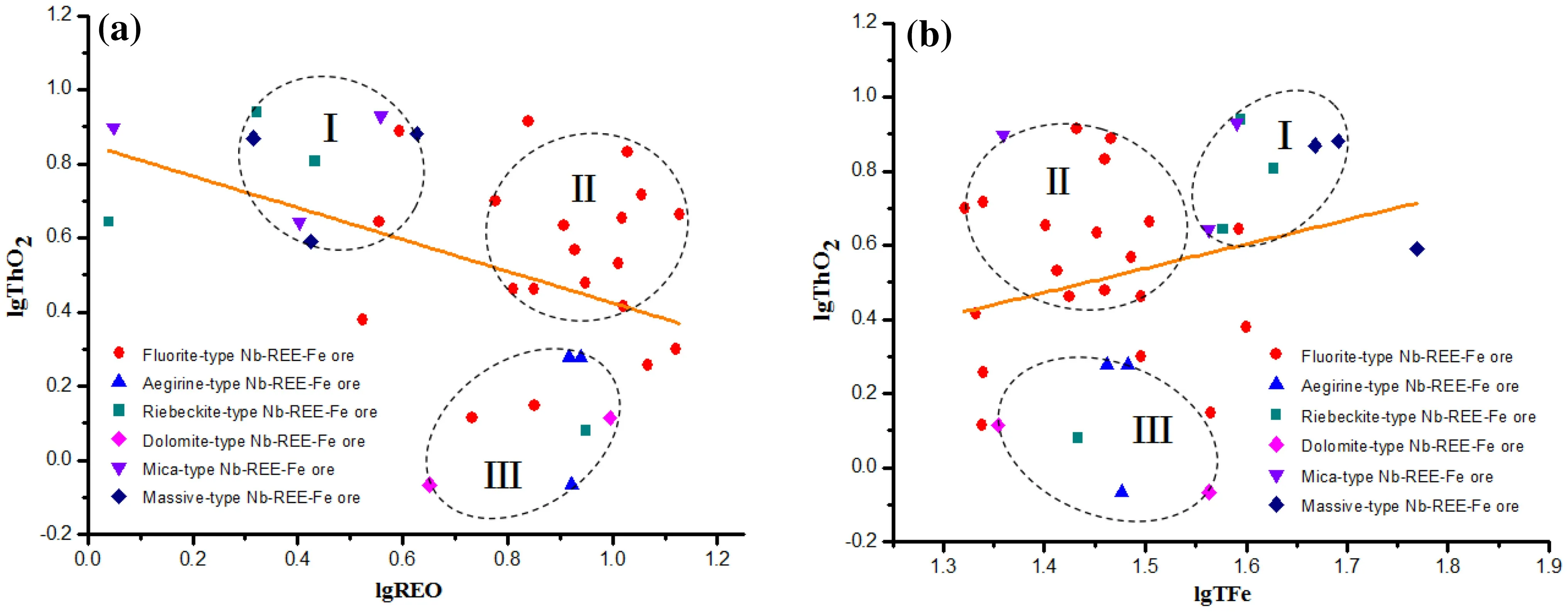
Fig. 6 Correlation between ThO2 and REO and ThO2 and TFe
(2) Thorium independent minerals are sparse in iron ore combined samples from the Bayan Obo Main Ore Body. Thorium occurs in in rare earth minerals,niobium minerals, and other minerals mainly in the form of isomorphism.
(3) Thorium mineralization of the Main Ore Body was mainly related to alkali metasomatism, which provides material conditions and porosity for later hydrothermal mineralization. Ba, Th, Nb, and REE were obviously enriched in the Main Ore Body,indicating that they were consistently enriched in the process of mineralization, and at the same time, a large area of alkaline alteration was developed in the ore body, both of which indicated that the oreforming fluid have the characteristics of mantle source.The correlation coefficients of trace elements Sc, Nb, Zr, Ta and thorium were higher, which was related to the associated minerals in the formation of thorium mineralization.
(4) Correlation analysis of ThO2and TFe,and REO and TFe in the six types of iron ore samples showed that ThO2did not always account for the highest distribution rate in rare earth minerals, and the main occurrence minerals of ThO2were closely related to iron ore types.
AcknowledgementsThis study was supported by the National Basic Research Program of China (973 Program) (2012CBA01200) and Northern Rare Earth Science and Technology Project (BFXT-2015-D-0002) and (2016H1928).
- Acta Geochimica的其它文章
- Acta Geochimica
- Guizhou Province, China: the birthplace of modern Medical Geology
- Altitude-dependent distribution of 137Cs in the environment:a case study of Aragats massif, Armenia
- Rapid estimation of soil heavy metal nickel content based on optimized screening of near-infrared spectral bands
- Low-temperature alteration of uranium-thorium bearing minerals and its significance in neoformation of radioactive minerals in stream sediments of Wadi El-Reddah, North Eastern Desert, Egypt
- Evaluation of the potential risks of heavy metal contamination in rice paddy soils around an abandoned Hg mine area in Southwest China

